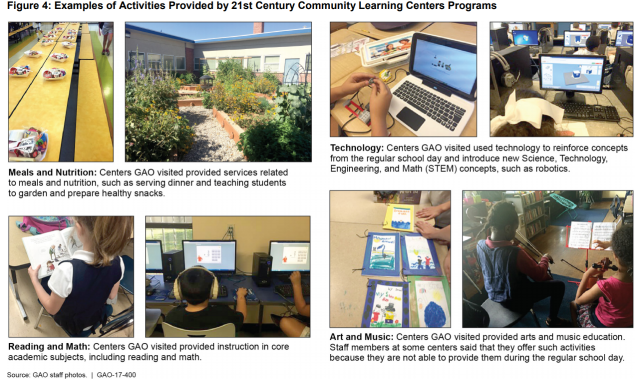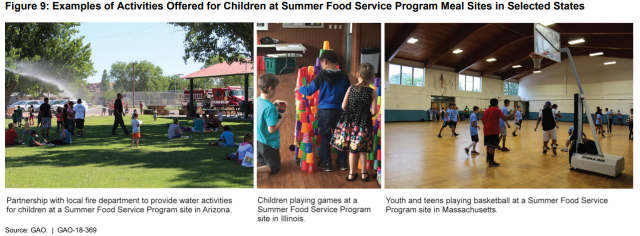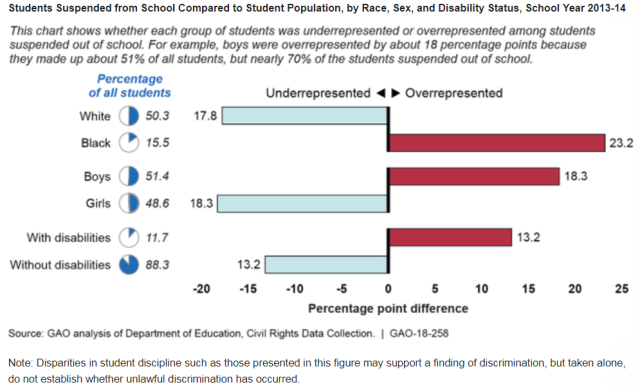Students’ Performance in School Has Many Causes
 The Department of Education measures the success of these programs by whether they help improve students’ academic performance. But research we reviewed suggests the program helps improve students’ behavior, such as school-day attendance and reduced disciplinary incidents, more often than their academic outcomes. We recommended ways to improve the 21st Century’s performance measures, program evaluations, and program sustainability.
When kids can’t rely on school meals during summer break, what fills the gap?
The Summer Food Service Program (SFSP) provides free meals to children in low-income areas during the summer. We found that meals served increased in recent years, but no one knew how many children received them. As a result, the extent to which the program is filling the summertime meal gap is unknown.
We also found that states and program providers had challenges with meal sites, participation, and program administration. While there have been efforts to improve this, additional federal attention is needed.
The Department of Education measures the success of these programs by whether they help improve students’ academic performance. But research we reviewed suggests the program helps improve students’ behavior, such as school-day attendance and reduced disciplinary incidents, more often than their academic outcomes. We recommended ways to improve the 21st Century’s performance measures, program evaluations, and program sustainability.
When kids can’t rely on school meals during summer break, what fills the gap?
The Summer Food Service Program (SFSP) provides free meals to children in low-income areas during the summer. We found that meals served increased in recent years, but no one knew how many children received them. As a result, the extent to which the program is filling the summertime meal gap is unknown.
We also found that states and program providers had challenges with meal sites, participation, and program administration. While there have been efforts to improve this, additional federal attention is needed.
 Check out our recommendations to improve estimates of participation in SFSP, meal site safety, and program administration, then listen to Kathy Larin of our Education, Workforce, and Income Security team share more about what we found.
Check out our recommendations to improve estimates of participation in SFSP, meal site safety, and program administration, then listen to Kathy Larin of our Education, Workforce, and Income Security team share more about what we found.
 What’s in the drinking water in schools across the nation?
Our survey estimated 37% of school districts that had tested for lead in school drinking water found elevated levels of lead. 41% of school districts, serving 12 million students, had not tested in the 12 months prior to completing our survey.
What’s in the drinking water in schools across the nation?
Our survey estimated 37% of school districts that had tested for lead in school drinking water found elevated levels of lead. 41% of school districts, serving 12 million students, had not tested in the 12 months prior to completing our survey.
 Check out our recommendations to improve testing for and remediation of lead in school drinking water, and listen to Jackie Nowicki, a director in our Education, Workforce, and Income Security team, share more about our report.
Check out our recommendations to improve testing for and remediation of lead in school drinking water, and listen to Jackie Nowicki, a director in our Education, Workforce, and Income Security team, share more about our report.
 To improve its guidance to schools and further improve equal opportunity, we recommended that the Department of Education collect more information on what Title IX Coordinators do.
To improve its guidance to schools and further improve equal opportunity, we recommended that the Department of Education collect more information on what Title IX Coordinators do.
- Questions on the content of this post? Contact Jackie Nowicki at nowickij@gao.gov or Kathy Larin at larink@gao.gov.
- Comments on GAO’s WatchBlog? Contact blog@gao.gov.

GAO's mission is to provide Congress with fact-based, nonpartisan information that can help improve federal government performance and ensure accountability for the benefit of the American people. GAO launched its WatchBlog in January, 2014, as part of its continuing effort to reach its audiences—Congress and the American people—where they are currently looking for information.
The blog format allows GAO to provide a little more context about its work than it can offer on its other social media platforms. Posts will tie GAO work to current events and the news; show how GAO’s work is affecting agencies or legislation; highlight reports, testimonies, and issue areas where GAO does work; and provide information about GAO itself, among other things.
Please send any feedback on GAO's WatchBlog to blog@gao.gov.
